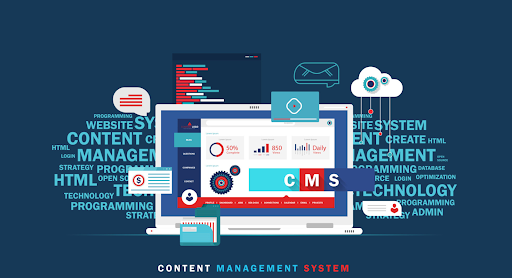How To Build A Website For Your Online Business - Essential Tips (Part 2)
Building a website may be daunting, especially for those new to the digital world. However you can transform this challenge into a rewarding opportunity with the right guidance and resources. From understanding the principles of web design to choosing the appropriate tools that align with your business goals, we’ll cover the entire spectrum of website creation.
– 12 mins

Building a robust online presence is not just a choice but a necessity for the success of any business. In the era of e-commerce—building a compelling website is the cornerstone of success for your online business and reflects the essence of your brand. Whether you’re a seasoned entrepreneur or just taking the plunge into the world of eCommerce, understanding how to build a website effectively is a game-changer.
We’ll walk you through the intricacies of web development, demystifying the process for beginners and providing valuable strategies for those looking to enhance their existing digital storefronts. We’ll explore the latest tools and technologies that empower you to build a website that captures attention and converts visitors into loyal customers.
Whether you’re venturing into the digital realm for the first time or seeking to revamp your online presence—join us in exploring how to build a website for your online business.
9 Essential tips to build a website for your online business
Building a website for your online business is crucial in establishing your digital presence. Here are some essential tips and web tools to help you create an effective and engaging website:
1. Define your goals and target audience
Defining vivid goals and understanding your target audience is fundamental to creating an effective and engaging website.
Begin by articulating your website’s purpose and what you aim to achieve—setting specific, measurable, and realistic goals, whether selling products, providing information or promoting a cause is crucial.
For instance—if your goal is to increase sales, specify the desired percentage growth within a defined timeframe.
Simultaneously—identifying and understanding your target audience is pivotal. Conduct a thorough market research and assess the demographics, preferences, and behaviors of your potential visitors. Develop comprehensive customer personas that represent your ideal audience, considering age, location, interests, and online behaviors. This information will guide your content creation, design choices, and overall user experience.
Craft your website’s content with your audience in mind, ensuring it resonates with their needs and interests. Use language, visuals, and navigation structures that align with their preferences. Employ user-friendly design principles to enhance the overall experience, focusing on mobile responsiveness and intuitive navigation.
Regularly monitor and analyze website analytics to assess performance against your goals. Make adjustments as needed to optimize user engagement and achieve your objectives. By aligning your goals with your target audience, you’ll create a website that attracts visitors and keeps them engaged and satisfied.

2. Choose a reliable web hosting service
Selecting a reliable web hosting service is crucial for the success of your online business. When choosing a hosting provider, consider factors contributing to your website’s performance and security.
Firstly, assess the hosting provider’s uptime guarantee. A reliable service should offer high uptime percentages, ensuring your website is consistently accessible to visitors. Downtime can negatively impact user experience and potentially lead to loss of business.
Evaluate the scalability of the hosting plans. Your hosting requirements may alter as your internet business expands. Select a provider that enables simple scalability, allowing you to scale up or downgrade your plan based on your needs.
Security features are paramount. Opt for a hosting service that provides robust security measures, including firewalls, malware detection, and regular backups. A secure website protects your business data and instils trust in your customers.
Consider the level of customer support offered by the hosting provider. A trustworthy support system, available 24/7, ensures prompt resolution of any issues that may arise. Look for hosting services with a reputation for responsive and knowledgeable customer service.
Lastly, examine user reviews and testimonials to gauge other businesses’ experiences with the hosting provider. A strong track record of positive reviews indicates reliability and customer satisfaction.
Prioritize uptime, scalability, security, customer support, and user feedback when selecting a web hosting service. Making an informed choice lays a strong foundation for an effective and engaging online presence for your business.

3. Select the right content management system
Start by identifying your specific needs and goals. Consider the scale and complexity of your website, the type of content you plan to publish, and the level of customization required.
Evaluate the user-friendliness of the content management system—CMS. A good CMS should have an intuitive interface, making it easy for users with varying technical expertise to manage and update content. Look for a system that streamlines content creation, content and video editing, and content publishing processes.
Consider scalability—Your website requirements may change as your online business grows. Choose a CMS that can easily adapt and scale with your business needs. This flexibility ensures that your website remains efficient and effective over time.
Examine the available themes and templates—The visual appeal of your website is crucial for engagement. A CMS with various customizable themes allows you to create a unique and visually appealing online presence that aligns with your brand.
Check for plugin and extension support—A robust CMS should offer a range of plugins or extensions to enhance functionality. This allows you to add features and integrations, such as e-commerce capabilities, social media feeds, or analytics tools, to meet your specific business requirements.
Consider security features—The CMS should prioritize security, with regular updates and a strong track record of addressing vulnerabilities. Security is essential for protecting your website and customer data.
Lastly—read reviews and seek recommendations from other businesses in your industry. Real-world experiences can give useful insights regarding a CMS’s performance, dependability, and overall satisfaction.
By carefully considering these factorsyou can select a CMS that aligns with your business objectives, facilitating the creation of an effective and engaging website.

4. Create a responsive design for mobile compatibility
Adopting a responsive design for mobile compatibility is essential to ensure a website is both effective and engaging for online business.
Start with a mobile-first approach, recognizing the prevalence of mobile users. Design your website’s core elements for mobile devices, ensuring a seamless and optimized experience for users accessing your site on smartphones or tablets. This approach allows for a solid foundation that can be progressively enhanced for larger screens, ensuring consistent user satisfaction across all devices.
Leverage fluid grids and flexible layouts to create a design that adapts to various screen sizes. This involves using relative units like percentages instead of fixed pixels for widths and employing CSS media queries to adjust styles based on device characteristics. Responsive images play a crucial role in this process, dynamically adjusting size and resolution to accommodate different screen dimensions. By incorporating these techniques, your website will maintain a visually appealing and functional layout, optimizing the user experience across the spectrum of devices.
Finally—prioritize touch-friendly navigation elements to accommodate mobile users. This includes using larger buttons, touch-friendly links, and intuitive mobile navigation patterns like hamburger menus. Implementing optimized typography and streamlining content for smaller screens contribute to a more user-friendly experience.
Regular testing across multiple browsers and devices, along with user feedback, ensures ongoing refinement and improvement, ultimately creating a responsive design that aligns with the needs and expectations of your diverse audience.
5. Invest in a professional design and user experience (UX)
Focus on a clean layout, intuitive navigation, and high-quality images to create a positive user experience. Choose a cohesive color palette, imagery and typography that convey professionalism and reflect the essence of your business. Consistency in design elements across the website fosters a sense of reliability and trustworthiness.
A well-organized site structure with clear menus and navigation paths will act as a definitive guide for users seamlessly through your content. Ensure important information is easily accessible, reducing the clicks required to reach key pages. Implement responsive design principles, guaranteeing a consistent and optimized experience across various devices. By prioritizing user-friendly navigation, you enhance the overall UX, encouraging visitors to explore your offerings and engage with your business.
Additionally—pay meticulous attention to content presentation. Utilize compelling and concise copy that communicates your message effectively. Break content into digestible sections, incorporating visuals to enhance understanding and retention. Optimize page loading times to prevent user frustration and strategically place calls-to-action to encourage desired interactions.
Conduct usability testing to gather insights into user behavior, preferences, and pain points, allowing you to continually refine and improve the UX. By investing in a professional design and prioritizing a seamless UX, your online business can create a digital environment that not only attracts but retains visitors, fostering a positive and lasting impression.

6. Secure your website
Securing your website is paramount—prioritize the implementation of HTTPS to encrypt data transmitted between the user’s browser and your website. This not only safeguards sensitive information such as login credentials and payment details but also boosts user trust by displaying a secure connection in the browser address bar.
Keep all software, including your content management system (CMS), plugins, and themes, up to date. Regularly applying security patches and updates helps close potential vulnerabilities that malicious actors may exploit.
Choose a reputable hosting provider with robust security measures—such as firewalls and intrusion detection systems, to safeguard your website from external threats.
Implement strong password policies for both users and administrators. Encourage the use of complex passwords and enable multi-factor authentication for an added layer of security.
Regularly audit user accounts and permissions to ensure that only authorized individuals have access to sensitive areas of your website. Conduct routine security scans and monitor website logs for suspicious activities to promptly detect and respond to potential security breaches.
By combining these measures, your online business can establish a robust security framework, safeguard sensitive data, and ensure a secure and trustworthy environment for visitors. Regularly reassess and update your security practices to stay ahead of emerging threats and maintain a resilient defence against potential cyber risks.

7. Create compelling content for marketing
Develop compelling and relevant content for your audience. Invest time to understand your target audience thoroughly. Conduct market research to identify your audience’s preferences, pain points, and interests. Customize your content to resonate with your audience, addressing their needs and providing valuable solutions. Utilize a conversational tone that connects with your readers and establishes a rapport, fostering a sense of trust and relatability.
Diversify your content formats to cater to different preferences. Incorporate a mix of written articles, visual elements such as infographics and images, and multimedia content like videos and podcasts, if possible. This caters to varied audience preferences and enhances the overall user experience, making your website more engaging and dynamic.
Additionally—maintain consistency in your brand voice and messaging across all content. Develop a unique and authentic voice that reflects your brand personality. This consistency strengthens brand identity and reinforces your message, making it more memorable for your audience.
Regularly update your content to keep it relevant and aligned with industry trends. Use compelling headlines, captivating visuals, and a well-organized structure to capture and maintain your audience’s attention. Encourage user engagement through comments, social media shares, and interactive elements.

8. Choose the right eCommerce integration platform
Since your business sells products or services online, selecting the right eCommerce integration platform is crucial.
Consider the scalability and flexibility of the platform. Opt for a solution that can seamlessly help grow your website, accommodating increased product listings, user traffic, and evolving needs. A scalable platform ensures that your website remains robust and responsive to the demands of a growing online business.
Prioritize user-friendly interfaces and features. A well-designed eCommerce integration platform should offer intuitive navigation for administrators and customers. Look for features such as a straightforward product management system, secure payment gateways, and customizable templates for an aesthetically pleasing and user-centric online shopping experience. Accessibility and ease of use contribute significantly to customer satisfaction and engagement.
Additionally—assess the platform’s compatibility with third-party integrations and plugins. Choose a solution that supports essential integrations like inventory management, CRM, and marketing tools. This will enhance your eCommerce website’s functionality—allowing for a seamless and interconnected business operation. A platform that facilitates integration with popular services ensures that you can leverage various tools to enhance the overall performance and efficiency of your online business.
The right eCommerce integration platform strikes a balance between scalability, user-friendliness, and compatibility with third-party tools. By making an informed choice, you lay the groundwork for an effective and engaging online shopping experience that not only meets current needs but also adapts to the future growth of your business.

9. Integrate analytics and monitoring tools
Choose a robust analytics platform that aligns with your business goals. Popular choices include Google Analytics, which provides comprehensive insights into user behavior, traffic sources, and conversion rates.
Set up the analytics tool to track key performance indicators (KPIs) such as page views, bounce rates, and conversion funnels. By getting to know how users interact with your website, you will be able to make informed decisions to enhance its effectiveness and engagement.
Implement real-time monitoring tools to promptly identify and address issues. These tools track website performance, server response times, and user interactions in real-time. You can proactively monitor your site to identify potential bottlenecks, downtime, or security threats. Choose monitoring tools that offer customizable alerts to notify you of any anomalies or performance issues, allowing for swift corrective action and minimizing potential disruptions to the user experience.
Integrating heatmaps and user session recording tools is essential to gain deeper insights into user interactions. Heatmaps visually represent areas of high and low user engagement, helping you optimize the placement of key elements. User session recordings allow you to observe individual user journeys, identify pain points, and enhance the overall user experience.
Regularly analyze the collected data, make iterative improvements, and remain informed about emerging trends to ensure the ongoing success of your online presence. Leveraging the right tools will build a website that represents your online business effectively and attracts and retains your target audience. Regularly update and adapt your website to stay current with industry trends and evolving customer expectations.
The final words
In the current business landscape, establishing an online presence is imperative for reaching a wider audience. Armed with the requisite knowledge of how to create a website for your online business, it’s time to take action. Begin by outlining the key objectives you aim to accomplish with your website.
While building an effective and engaging website for your online business, prioritize user experience, embrace a mobile-first approach, and choose a reliable hosting service. Tailor content to resonate with your audience, utilize multimedia elements, and maintain brand consistency. It’s crucial to emphasize ongoing testing throughout the development to guarantee the attainment of desired outcomes.

Surrinder Kumar is a content writer at RankHandy. He has more than 6 years of experience writing for the marketing, HR, and business sectors and aims to provide high-quality content.





